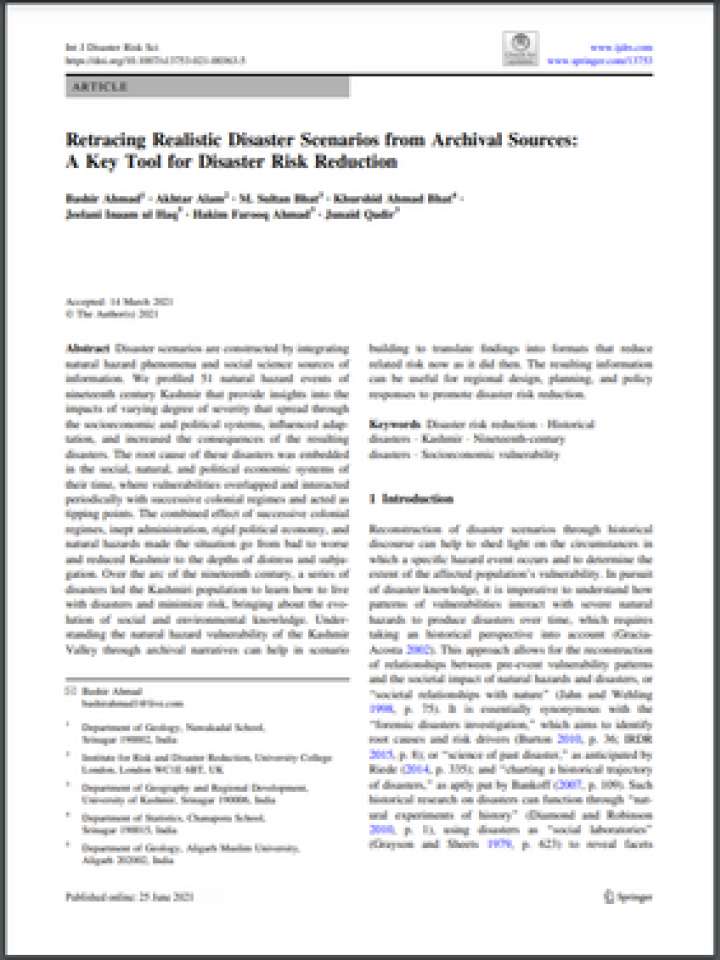Retracing realistic disaster scenarios from archival sources: a key tool for disaster risk reduction
This publication profiles 51 natural hazard events of nineteenth century Kashmir to provide insights into the impacts of varying degree of severity that spread through the socioeconomic and political systems, influenced adaptation, and increased the consequences of the resulting disasters. Disaster scenarios are constructed by integrating natural hazard phenomena and social science sources of information. The root cause of these disasters was embedded in the social, natural, and political economic systems of their time, where vulnerabilities overlapped and interacted periodically with successive colonial regimes and acted as tipping points. The combined effect of successive colonial regimes, inept administration, rigid political economy, and natural hazards made the situation go from bad to worse and reduced Kashmir to the depths of distress and subjugation. Over the arc of the nineteenth century, a series of disasters led the Kashmiri population to learn how to live with disasters and minimize risk, bringing about the evolution of social and environmental knowledge. Understanding the natural hazard vulnerability of the Kashmir Valley through archival narratives can help in scenario building to translate findings into formats that reduce related risk now as it did then.
The findings from this study provide event and impact scenarios with known risks, complemented by probabilistic risk management strategies as a foundation for resilience against disasters. Disasters in Kashmir in the nineteenth century demonstrate intersecting events and processes in which disaster-affected people in Kashmir were marginalized geographically because they lived in hazardous places; socially because they were members of lower classes; economically because they were underprivileged; and politically because their collective voice was unheeded. Realistic disaster scenarios transform experience and memory into local knowledge that can be used as a template to reduce risk today, as it did during the nineteenth century. These strategies call for reforming public safety policies and developing robust disaster risk responses at the local and national levels. As a corollary, historical disaster research is a valuable approach by which to determine periods in history with analogous disaster trajectories. These comparative insights are much needed to reduce risk that arises out of such processes, since such pre-disaster patterns of vulnerabilities may be found locally or globally.
Explore further
